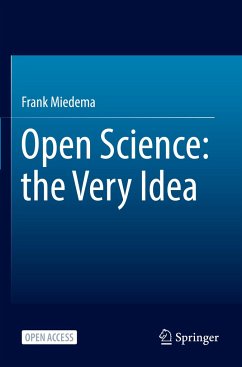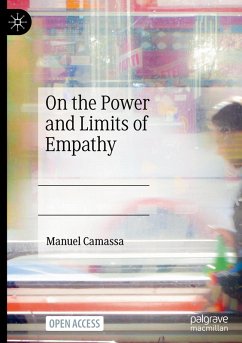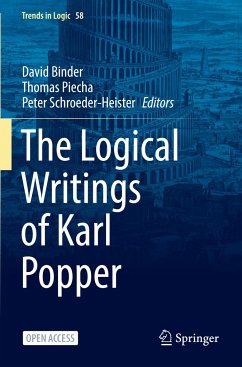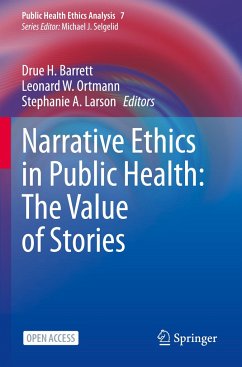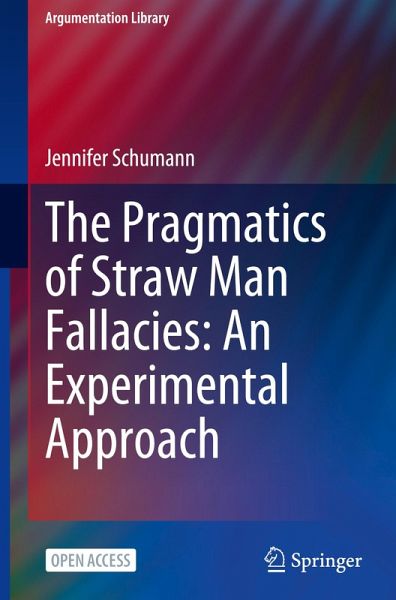
The Pragmatics of Straw Man Fallacies: An Experimental Approach
Versandkostenfrei!
Versandfertig in 6-10 Tagen
38,99 €
inkl. MwSt.

PAYBACK Punkte
19 °P sammeln!
This open-access book provides the first experimental pragmatic investigation of the straw man, uncovering a variety of factors that increase or decrease the acceptability of this fallacy. The book starts with an overview of the primarily theoretical frameworks on argumentation/fallacies and the straw man. The aim is to provide a synthetic review of the research conducted in argumentation and the study of fallacies with a strong focus on modern approaches and the role of language within these approaches. It is followed by an overview of the empirical methods in argumentation, which leads the r...
This open-access book provides the first experimental pragmatic investigation of the straw man, uncovering a variety of factors that increase or decrease the acceptability of this fallacy. The book starts with an overview of the primarily theoretical frameworks on argumentation/fallacies and the straw man. The aim is to provide a synthetic review of the research conducted in argumentation and the study of fallacies with a strong focus on modern approaches and the role of language within these approaches. It is followed by an overview of the empirical methods in argumentation, which leads the reader to the core part of the book, i.e., the experimental pragmatic approach to the straw man fallacy. This part of the book presents several original studies assessing the role of different linguistic factors in the perception of straw men. The book is structured as follows:
Chapter 1 introduces the book. The reader will be familiarised with the topic of the straw man as a fallacious argument and the research axes of the book.
Chapter 2 provides an overview of argumentation and fallacy theory, and the role of language in the selected approaches.
Chapter 3 discusses various theoretical approaches to the straw man fallacy.
Chapter 4 provides an overview of empirical methodologies in argumentation.
Chapter 5 presents a series of exploratory studies discussing three pragmatic factors.
Chapter 6 addresses the question of information structure for the communication of straw man fallacies.
Chapter 7 presents a more detailed analysis of the role of causal connectives used to introduce an argument.
Chapter 8 presents a cross-linguistic examination of the role of causal connectives with attributive functions.
Chapter 9 focuses on the refutational dimension of the straw man fallacy. The previous chapters have mainly investigated factors related to the misrepresentational dimension of the straw man.
Chapter 10 provides a summary of the mainfindings and opens toward future lines of investigation.
The book targets young and senior scholars interested in research on straw man fallacies, experimental approaches to the study of fallacies and argumentation in general.
Chapter 1 introduces the book. The reader will be familiarised with the topic of the straw man as a fallacious argument and the research axes of the book.
Chapter 2 provides an overview of argumentation and fallacy theory, and the role of language in the selected approaches.
Chapter 3 discusses various theoretical approaches to the straw man fallacy.
Chapter 4 provides an overview of empirical methodologies in argumentation.
Chapter 5 presents a series of exploratory studies discussing three pragmatic factors.
Chapter 6 addresses the question of information structure for the communication of straw man fallacies.
Chapter 7 presents a more detailed analysis of the role of causal connectives used to introduce an argument.
Chapter 8 presents a cross-linguistic examination of the role of causal connectives with attributive functions.
Chapter 9 focuses on the refutational dimension of the straw man fallacy. The previous chapters have mainly investigated factors related to the misrepresentational dimension of the straw man.
Chapter 10 provides a summary of the mainfindings and opens toward future lines of investigation.
The book targets young and senior scholars interested in research on straw man fallacies, experimental approaches to the study of fallacies and argumentation in general.






